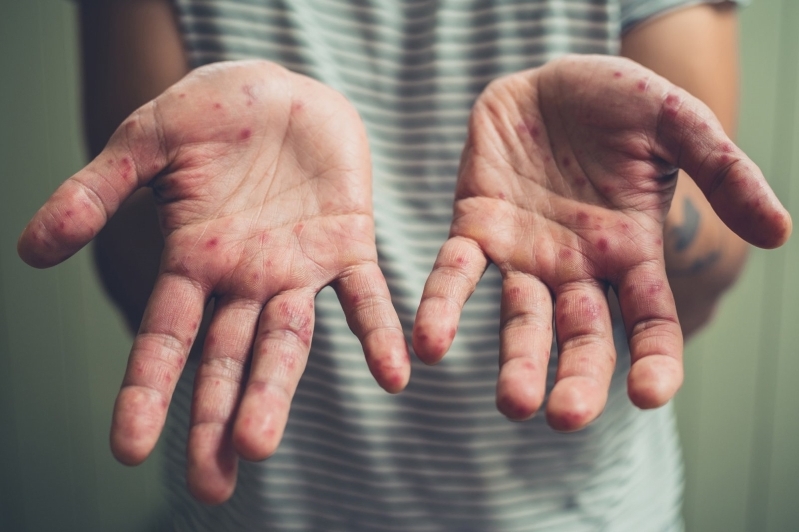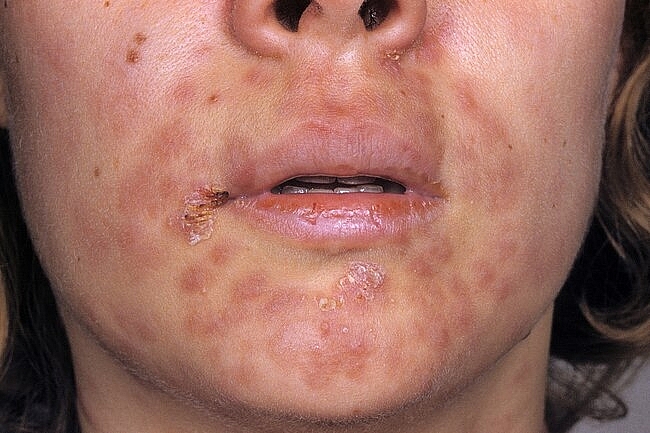What is Syphilis: Causes, Symptoms and Best Treatment
 |
| What is Syphilis: Causes, Symptoms and Best Treatment |
What is syphilis?
Syphilis is a sexually transmitted infection (STI) caused by a type of bacteria known as Treponema pallidum. In 2016, more than 88,000 cases of syphilisTrusted Source were reported in the United States, according to the Centers for Disease Control and Prevention (CDC).
The rate of women with syphilis has been declining in the United States, but the rate among men, particularly men who have sex with men, has been rising.
The first sign of syphilis is a small, painless sore. It can appear on the sexual organs, rectum, or inside the mouth. This sore is called a chancre. People often fail to notice it right away.
Syphilis can be challenging to diagnose. Someone can have it without showing any symptoms for years. However, the earlier syphilis is discovered, the better. Syphilis that remains untreated for a long time can cause major damage to important organs, like the heart and brain.
Syphilis is only spread through direct contact with syphilitic chancres. It can’t be transmitted by sharing a toilet with another person, wearing another person’s clothing, or using another person’s eating utensils.
 |
| Syphilis is among the common infectious diseases in the US. Photo: Webmd |
Stages of syphilis infection
The four stages of syphilis are:
-
primary
-
secondary
-
latent
-
tertiary
Syphilis is most infectious in the first two stages.
When syphilis is in the hidden, or latent, stage, the disease remains active but often with no symptoms. Tertiary syphilis is the most destructive to health.
Primary syphilis
The primary stage of syphilis occurs about three to four weeks after a person contracts the bacteria. It begins with a small, round sore called a chancre. A chancre is painless, but it’s highly infectious. This sore may appear wherever the bacteria entered the body, such as on or inside the mouth, genitals, or rectum.
On average, the sore shows up around three weeks after infection, but it can take between 10 and 90 days to appear. The sore remains for anywhere between two to six weeks.
Syphilis is transmitted by direct contact with a sore. This usually occurs during sexual activity, including oral sex.
Secondary syphilis
Skin rashes and a sore throat may develop during the second stage of syphilis. The rash won’t itch and is usually found on the palms and soles, but it may occur anywhere on the body. Some people don’t notice the rash before it goes away.
Other symptoms of secondary syphilis may include:
-
headaches
-
swollen lymph nodes
-
fatigue
-
fever
-
weight loss
-
hair loss
-
aching joints
These symptoms will go away whether or not treatment is received. However, without treatment, a person still has syphilis.
Secondary syphilis is often mistaken for another condition.
Latent syphilis
The third stage of syphilis is the latent, or hidden, stage. The primary and secondary symptoms disappear, and there won’t be any noticeable symptoms at this stage. However, the bacteria remain in the body. This stage could last for years before progressing to tertiary syphilis.
Tertiary syphilis
The last stage of infection is tertiary syphilis. According to the Mayo Clinic, approximately 15 to 30 percent of people who don’t receive treatment for syphilis will enter this stage. Tertiary syphilis can occur years or decades after the initial infection. Tertiary syphilis can be life-threatening. Some other potential outcomes of tertiary syphilis include:
-
blindness
-
deafness
-
mental illness
-
memory loss
-
destruction of soft tissue and bone
-
neurological disorders, such as stroke or meningitis
-
heart disease
-
neurosyphilis, which is an infection of the brain or spinal cord
How is syphilis diagnosed?
If you think you might have syphilis, go to your doctor as soon as possible. They’ll take a blood sample to run tests, and they’ll also conduct a thorough physical examination. If a sore is present, your doctor may take a sample from the sore to determine if the syphilis bacteria are present.
If your doctor suspects that you’re having nervous system problems because of tertiary syphilis, you may need a lumbar puncture or spinal tap. During this procedure, spinal fluid is collected so that your doctor can test for syphilis bacteria.
If you’re pregnant, your doctor might screen you for syphilis because the bacteria can be in your body without you knowing it. This is to prevent the fetus from being infected with congenital syphilis. Congenital syphilis can cause severe damage in a newborn and can even be fatal.
 |
| Photo: STD Clinic. |
Treating and curing syphilis
According to CDC's latest Guidings, Penicillin G, administered parenterally, is the preferred drug for treating persons in all stages of syphilis. The preparation used (i.e., benzathine, aqueous procaine, or aqueous crystalline), dosage, and length of treatment depend on the stage and clinical manifestations of the disease. Treatment for late latent syphilis and tertiary syphilis require a longer duration of therapy, because organisms theoretically might be dividing more slowly (the validity of this rationale has not been assessed). Longer treatment duration is required for persons with latent syphilis of unknown duration to ensure that those who did not acquire syphilis within the preceding year are adequately treated.
Selection of the appropriate penicillin preparation is important, because T. pallidum can reside in sequestered sites (e.g., the CNS and aqueous humor) that are poorly accessed by some forms of penicillin. Combinations of benzathine penicillin, procaine penicillin, and oral penicillin preparations are not considered appropriate for the treatment of syphilis. Reports have indicated that practitioners have inadvertently prescribed combination benzathine-procaine penicillin (Bicillin C-R) instead of the standard benzathine penicillin product (Bicillin L-A) widely used in the United States. Practitioners, pharmacists, and purchasing agents should be aware of the similar names of these two products to avoid using the inappropriate combination therapy agent for treating syphilis.
The effectiveness of penicillin for the treatment of syphilis was well established through clinical experience even before the value of randomized controlled clinical trials was recognized. Therefore, nearly all recommendations for the treatment of syphilis are based not only on clinical trials and observational studies, but many decades of clinical experience.
Treatment: Primary and secondary syphilis
Primary and secondary syphilis are easy to treat with a penicillin injection. Penicillin is one of the most widely used antibiotics and is usually effective in treating syphilis. People who are allergic to penicillin will likely be treated with a different antibiotic, such as:
- doxycycline
- azithromycin
- ceftriaxone
If you have neurosyphilis, you’ll get daily doses of penicillin intravenously. This will often require a brief hospital stay. Unfortunately, the damage caused by late syphilis can’t be reversed. The bacteria can be killed, but treatment will most likely focus on easing pain and discomfort.
During treatment, make sure to avoid sexual contact until all sores on your body are healed and your doctor tells you it’s safe to resume sex. If you’re sexually active, your partner should be treated as well. Don’t resume sexual activity until you and your partner have completed treatment.
| *Recommended Regimen for Adults - by CDC Benzathine penicillin G 2.4 million units IM in a single dose *Recommendations for treating syphilis in persons with HIV infection and pregnant women are discussed elsewhere in this report (see Syphilis among Persons with HIV infection and Syphilis During Pregnancy). |
Available data demonstrate that use of additional doses of benzathine penicillin G, amoxicillin, or other antibiotics do not enhance efficacy when used to treat primary and secondary syphilis, regardless of HIV status.
| Recommended Regimen for Infants and Children - by CDC Benzathine penicillin G 50,000 units/kg IM, up to the adult dose of 2.4 million units in a single dose |
Infants and children aged >1 month who receive a diagnosis of syphilis should have birth and maternal medical records reviewed to assess whether they have congenital or acquired syphilis . Infants and children aged ≥1 month with primary and secondary syphilis should be managed by a pediatric infectious-disease specialist and evaluated for sexual abuse (e.g., through consultation with child-protection services).
*Full treatment by CDC click Here
How to prevent syphilis
The best way to prevent syphilis is to practice safe sex. Use condoms during any type of sexual contact. In addition, it may be helpful to:
- Use a dental dam (a square piece of latex) or condoms during oral sex.
- Avoid sharing sex toys.
- Get screened for STIs and talk to your partners about their results.
Syphilis can also be transmitted through shared needles. Avoid sharing needles if using injected drugs.
Syphilis: Special ConsiderationsPregnancy Parenteral penicillin G is the only therapy with documented efficacy for syphilis during pregnancy. Pregnant women with syphilis in any stage who report penicillin allergy should be desensitized and treated with penicillin (see Management of Persons Who Have a History of Penicillin Allergy). Jarisch-Herxheimer Reaction The Jarisch-Herxheimer reaction is an acute febrile reaction frequently accompanied by headache, myalgia, fever, and other symptoms that can occur within the first 24 hours after the initiation of any therapy for syphilis. Patients should be informed about this possible adverse reaction and how to manage it if it occurs. The Jarisch-Herxheimer reaction occurs most frequently among persons who have early syphilis, presumably because bacterial burdens are higher during these stages. Antipyretics can be used to manage symptoms, but they have not been proven to prevent this reaction. The Jarisch-Herxheimer reaction might induce early labor or cause fetal distress in pregnant women, but this should not prevent or delay therapy (see Syphilis During Pregnancy). Management of Sex Partners Sexual transmission of T. pallidum is thought to occur only when mucocutaneous syphilitic lesions are present. Such manifestations are uncommon after the first year of infection. Persons exposed sexually to a person who has primary, secondary, or early latent syphilis should be evaluated clinically and serologically and treated according to the following recommendations: Persons who have had sexual contact with a person who receives a diagnosis of primary, secondary, or early latent syphilis within 90 days preceding the diagnosis should be treated presumptively for early syphilis, even if serologic test results are negative. Persons who have had sexual contact with a person who receives a diagnosis of primary, secondary, or early latent syphilis >90 days before the diagnosis should be treated presumptively for early syphilis if serologic test results are not immediately available and the opportunity for follow-up is uncertain. If serologic tests are negative, no treatment is needed. If serologic tests are positive, treatment should be based on clinical and serologic evaluation and stage of syphilis. In some areas or populations with high rates of syphilis, health departments recommend notification and presumptive treatment of sex partners of persons with late latent syphilis who have high nontreponemal serologic test titers (i.e., >1:32), because high titers might be indicative of early syphilis. These partners should be managed as if the index case had early syphilis. Long-term sex partners of persons who have late latent syphilis should be evaluated clinically and serologically for syphilis and treated on the basis of the evaluation’s findings. The following sex partners of persons with syphilis are considered at risk for infection and should be confidentially notified of the exposure and need for evaluation: partners who have had sexual contact within 1) 3 months plus the duration of symptoms for persons who receive a diagnosis of primary syphilis, 2) 6 months plus duration of symptoms for those with secondary syphilis, and 3) 1 year for persons with early latent syphilis. Source: Division of STD Prevention, National Center for HIV/AIDS, Viral Hepatitis, STD, and TB Prevention, CDC |
























